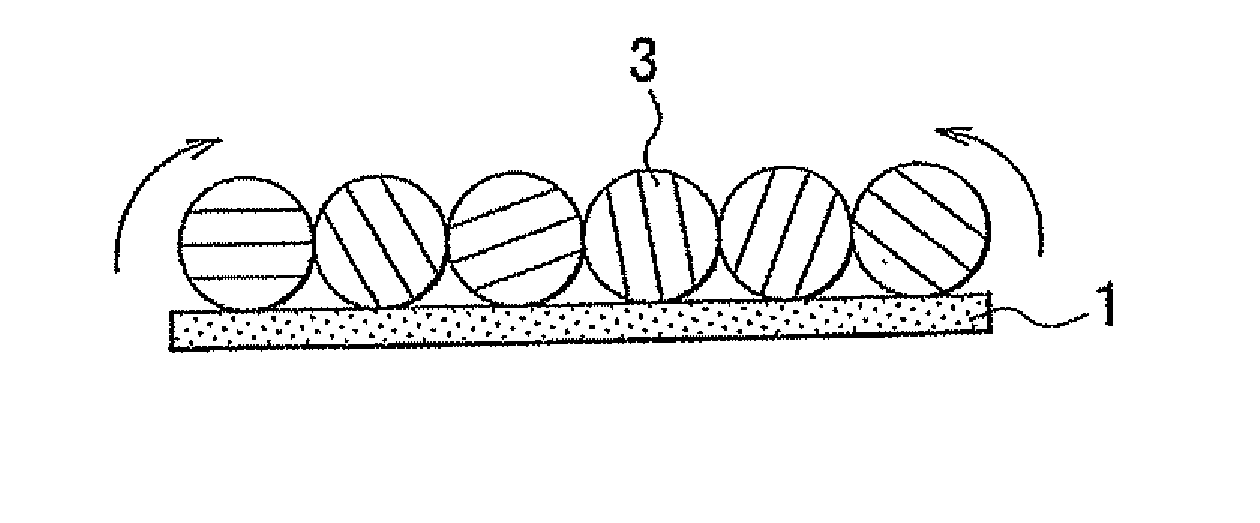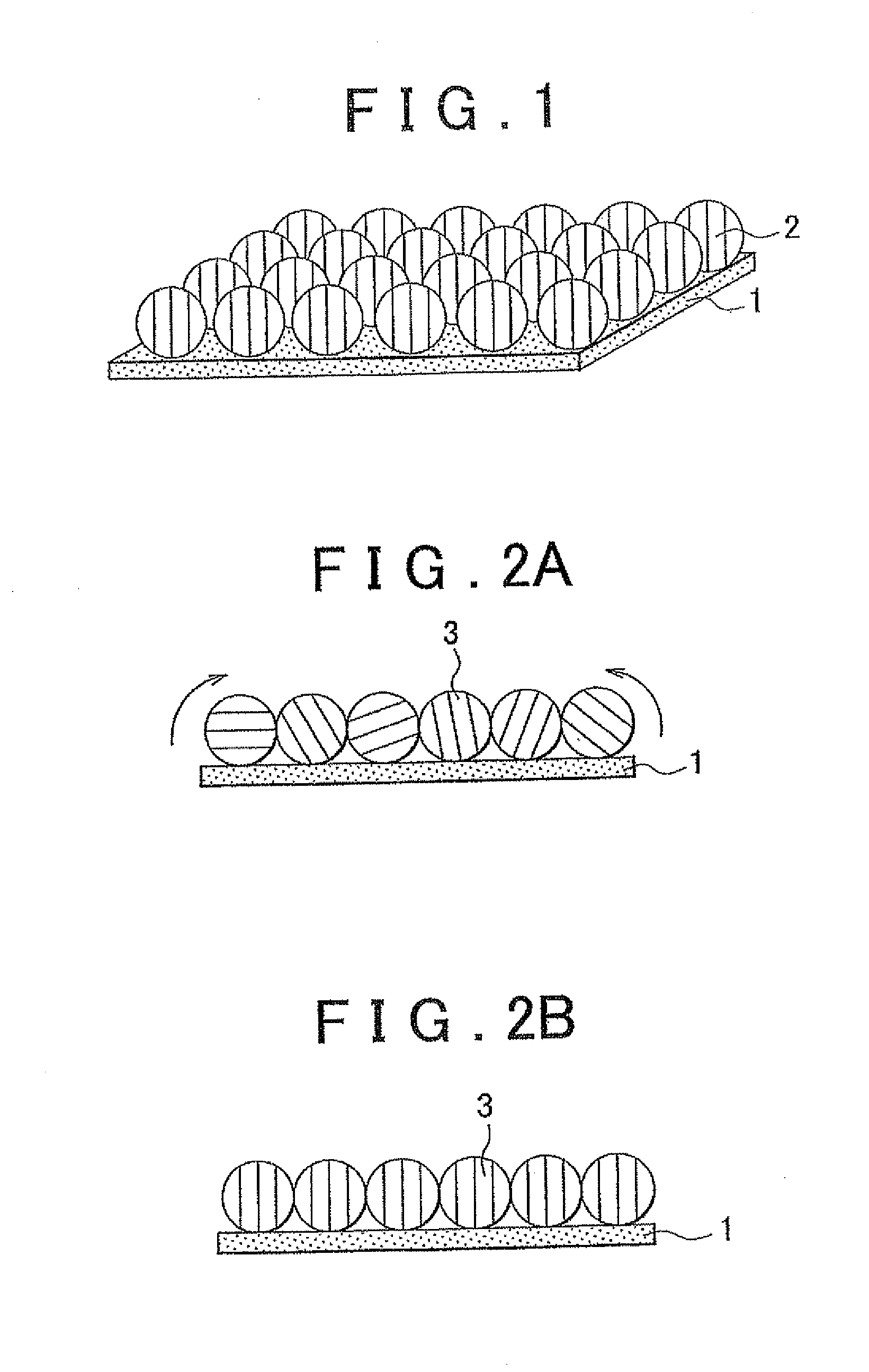Production method for electrode for battery, electrode produced by production method, and battery including electrode
- Summary
- Abstract
- Description
- Claims
- Application Information
AI Technical Summary
Benefits of technology
Problems solved by technology
Method used
Image
Examples
examples
1. Production of the Electrode for a Battery
first example
[0074]LiCoO2 (spherical particles, the aspect ratio: 1 to 2.5) that was a positive electrode active material, acetylene black that was a conductive material, a binder that was a binding agent were mixed at the mass ratio of 85:10:5 to produce a mixture. A positive electrode composite dispersion liquid was prepared by appropriately adding a dispersion medium to the mixture, and adjusting the viscosity. The dispersion liquid was applied to an aluminum foil that was a positive electrode current collector, and was dried in a strong magnetic field (12 T) using a superconducting magnet. The direction of the magnetic field was set to a direction parallel to the surface of the positive electrode current collector, and thus, the c-axis of LiCoO2 was controlled to be disposed in a direction parallel to the surface of the positive electrode current collector. Thus, an electrode for a battery in a first example was produced.
second example
[0075]The positive electrode composite dispersion liquid was prepared in the same manner as the manner in which the positive electrode composite dispersion liquid was prepared in the first example. The dispersion liquid was applied to the aluminum foil that was the positive electrode current collector, and was dried in a strong magnetic field (8 T) using a superconducting magnet. The direction of the magnetic field was set to the direction parallel to the surface of the positive electrode current collector, and thus, the c-axis of LiCoO2 was controlled to be disposed in the direction parallel to the surface of the positive electrode current collector. Thus, an electrode for a battery in a second example was produced.
PUM
| Property | Measurement | Unit |
|---|---|---|
| Magnetic field | aaaaa | aaaaa |
| Magnetic field | aaaaa | aaaaa |
| Magnetic field | aaaaa | aaaaa |
Abstract
Description
Claims
Application Information
 Login to View More
Login to View More - R&D
- Intellectual Property
- Life Sciences
- Materials
- Tech Scout
- Unparalleled Data Quality
- Higher Quality Content
- 60% Fewer Hallucinations
Browse by: Latest US Patents, China's latest patents, Technical Efficacy Thesaurus, Application Domain, Technology Topic, Popular Technical Reports.
© 2025 PatSnap. All rights reserved.Legal|Privacy policy|Modern Slavery Act Transparency Statement|Sitemap|About US| Contact US: help@patsnap.com



